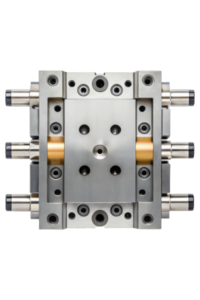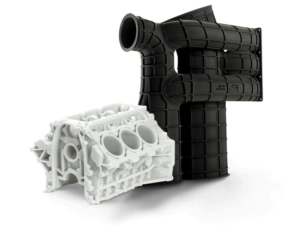Manufacturing has always been an arena of constant change and advancement. The continuing evolution of 3D printing services is a testament to that forward motion. With each new innovation comes unparalleled flexibility and speed in creating physical products. Yet, amidst this progress, challenges of quality control and defect detection challenges remain pivotal concerns.
In this comprehensive exploration, we look at how the fusion of real-time monitoring, sensor technology, and artificial intelligence (AI) is poised to transform the precision and effectiveness of manufacturing through 3D printing and other rapid prototyping methods.
From the tiniest intricate designs to large-scale production, this transformative blend of digital monitoring tools is reshaping the industry landscape, ensuring that every layer of material, every micron of print, is executed flawlessly, paving the way for the next manufacturing revolution.
The Essentials of Real-Time Monitoring in 3D Printing
Why Real-Time Monitoring is Crucial
Real-time monitoring is indispensable in the 3D printing process. It allows manufacturers to overlook the layer-by-layer creation and respond immediately to any discrepancies or defects before they become ingrained in the final product.
The Technology at Work
This system’s heart is a suite of advanced sensors that collect data on temperature, material consistency, pressure, and many other crucial parameters. AI algorithms are trained to identify potential issues and analyze this data in real-time.
Precision and response times are key. Sensors act as the system’s eyes and ears, while AI is the brain. When a sensor detects an anomaly, the AI can pause the printing process, alert an operator, or even make minor adjustments to mitigate risks.
The Implementation Process
Integrating real-time monitoring into a 3D printing service begins with thoroughly analyzing the printing environment and identifying key checkpoints. Afterward, a customized system is set up, tailored to the specific needs of the materials, machines, and products being produced.
AI and Quality Control: A Match Made in Manufacturing Heaven
Leveraging AI for Defect Detection
Traditional quality control methods involve manual inspection. AI leaps beyond, offering a high-speed and high-precision approach to detecting microscopic defects that could easily slip past the human eye.
AI models are trained using vast datasets of good and bad prints, learning the characteristics of a quality print and anomalies that suggest substandard printing. These models then continuously evaluate prints for these anomalies, flagging potential issues for review or intervention.
The Learning Curve
The true strength of AI lies in its learning capabilities. Over time, as the system processes more and more prints, it gets better at discerning even the slightest of irregularities, fine-tuning its detection abilities with each iteration.
Integrating AI with Other Systems
AI does not exist in a vacuum; it thrives in an integrated environment where it can monitor and adjust the printing parameters in real time to counteract potential defects as they arise.
Protecting Intellectual Property and Data Security
The Confluence of Digital and Physical Security
As manufacturing transcends into the digital realm, the security of both the intellectual property (IP) and the data generated by real-time monitoring systems becomes critical. Companies must invest in robust digital security measures to safeguard their designs and proprietary information.
Best Practices
From encryption to physical security measures, a multi-layered approach is crucial. Regular audits, behavioral analytics, and secure communication protocols help identify and address vulnerabilities promptly.
The Future of Manufacturing: A Glimpse of Things to Come
Further Advancements and Possibilities
The future promises even more sophisticated integration of real-time monitoring and AI in manufacturing; from enhancing 3D printing’s customization capabilities to supporting mass production, the potential applications are vast and varied.
Preparing for the Next Wave
As these technologies continue to evolve, manufacturing companies need to stay informed and begin to implement real-time monitoring systems; this will set the standard for quality and efficiency and serve as a competitive edge in an industry on the brink of unprecedented change.
Embracing Innovation with Real-Time Monitoring
Integrating real-time monitoring and AI is a game-changer for the manufacturing sector, from small-scale prototyping to large-scale production. It ensures that the promise of 3D printing and other rapid prototyping technologies—rapid iterations, bespoke customization, and reduced time to market—is fulfilled without compromising on quality.
For industry players, the message is clear: adaptation to these new technologies is no longer an option; it is an essential step towards future-proofing their operations and staying ahead of the curve. With real-time monitoring, we’re not just printing parts—we’re printing confidence in the quality of every product that rolls off the line.
The journey of 3D printing services and real-time monitoring is not merely an exploration of novel techniques; it is a roadmap to redefining the ethos of manufacturing. As we stand at the cusp of this new era, the question is not whether these technologies will redefine manufacturing but how quickly enterprises can embrace them to amplify their production capabilities.


